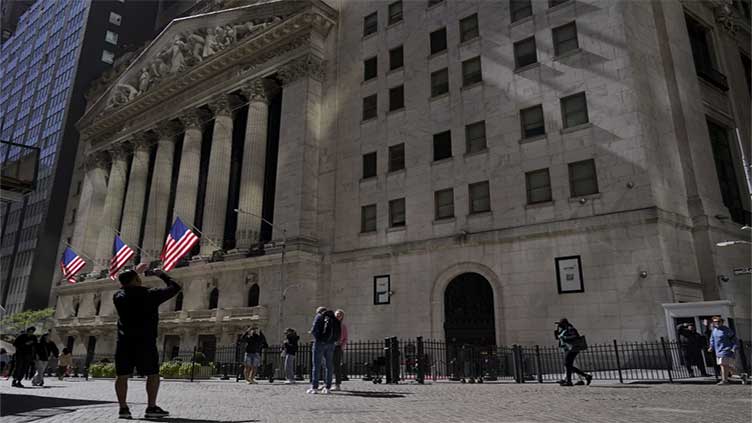Wall Street slips on fears about the downside of a too-strong economy

Business
Wall Street slips on fears about the downside of a too-strong economy
NEW YORK (AP) — Wall Street is slipping Tuesday following the latest signal the U.S. economy may still be too strong for the Federal Reserve’s liking.
The S&P 500 was 0.5% lower in morning trading. The Dow Jones Industrial Average was down 64 points, or 0.2%, as of 10:10 a.m. Eastern time, and the Nasdaq composite was 0.9% lower.
Financial markets have been shaky in recent weeks due to worries about war in the Middle East and its potential impact on oil prices. But those worries have receded a bit to put the focus back on what usually drives the stock market’s long-term movements: where interest rates and corporate profits are heading.
A report Tuesday morning raised worries that the Federal Reserve may feel pressure to keep interest rates high. Such a move could help bring down inflation, but it would also knock down prices for stocks and other investments at the same time.
The report showed that shoppers spent more at U.S. retailers last month than economists expected. While that’s a signal of a healthy economy and likely a result of a still-solid job market, it could be providing inflation more fuel to remain above the Fed’s 2% target.
The Fed is trying to pull off a delicate balancing act where it slows the economy just enough to drive down high inflation but not so much that it causes a painful recession.
Treasury yields in the bond market rose immediately after the release of the report. The yield on the 10-year Treasury climbed to 4.84% from 4.69% late Monday.
A sharp jump since the summer in the 10-year yield has weighed on the stock market, as traders increasingly succumb to the Fed’s forecasts that it will likely keep rates high for a long time. The central bank has already pulled its main interest rate to the highest level since 2001 and is debating whether to increase it one more time.
High rates and yields hurt prices for all kinds of stocks, and they tend to hit particularly hard on companies bid up on expectations for growth far in the future or stocks seen as expensive. That’s often put Big Tech stocks in the spotlight, and a 5.4% drop for Nvidia and 1.6% slip for Apple were two of the heaviest weights on the S&P 500.
Nvidia and other chipmakers were under extra pressure after the U.S. government broadened restrictions to stop China from acquiring advanced computer chips and the equipment to manufacture them.
Several big U.S. companies, meanwhile, were turning in mixed performances following their latest earnings reports.
Bank of America swung between modest gains and losses and was up 0.1% after beating Wall Street’s profit forecasts for the third quarter. It benefited from higher interest rates, but CEO Brian Moynihan also warned Americans continue to slow their spending after burning through the savings they had built up during the pandemic.
Johnson & Johnson fell 0.9% after also bouncing between small gains and losses. It reported profit and revenue that fell short of analysts’ expectations, according to FactSet.
Lockheed Martin climbed 1.8% after reporting stronger profit for the summer than analysts expected.
The broad expectation for companies across the S&P 500 index is that profits returned to growth during the summer for the first time in a year.
A big winner in the market was Wyndham Hotels & Resorts, whose stock jumped 11.2%. Rival Choice Hotels International said it wants to buy the company for $90 per share in cash and stock, valuing it at $7.8 billion.
The two had earlier been talking about a possible deal, Choice CEO Patrick Pacious said, but Wyndham walked away after they were “in a negotiable range on price and consideration.”
Choice shares fell 3.8%.
In stock markets abroad, indexes were mixed in Europe after rising more solidly across Asia.
Crude oil prices were holding steadier after swinging sharply in recent weeks on worries that war in the Middle East could lead to disruptions in supplies if it drew in Iran or other major oil-producing countries.
A barrel of benchmark U.S. crude rose 0.3% to $86.92, and Brent crude, the international standard, was 0.3% higher at $89.91.



